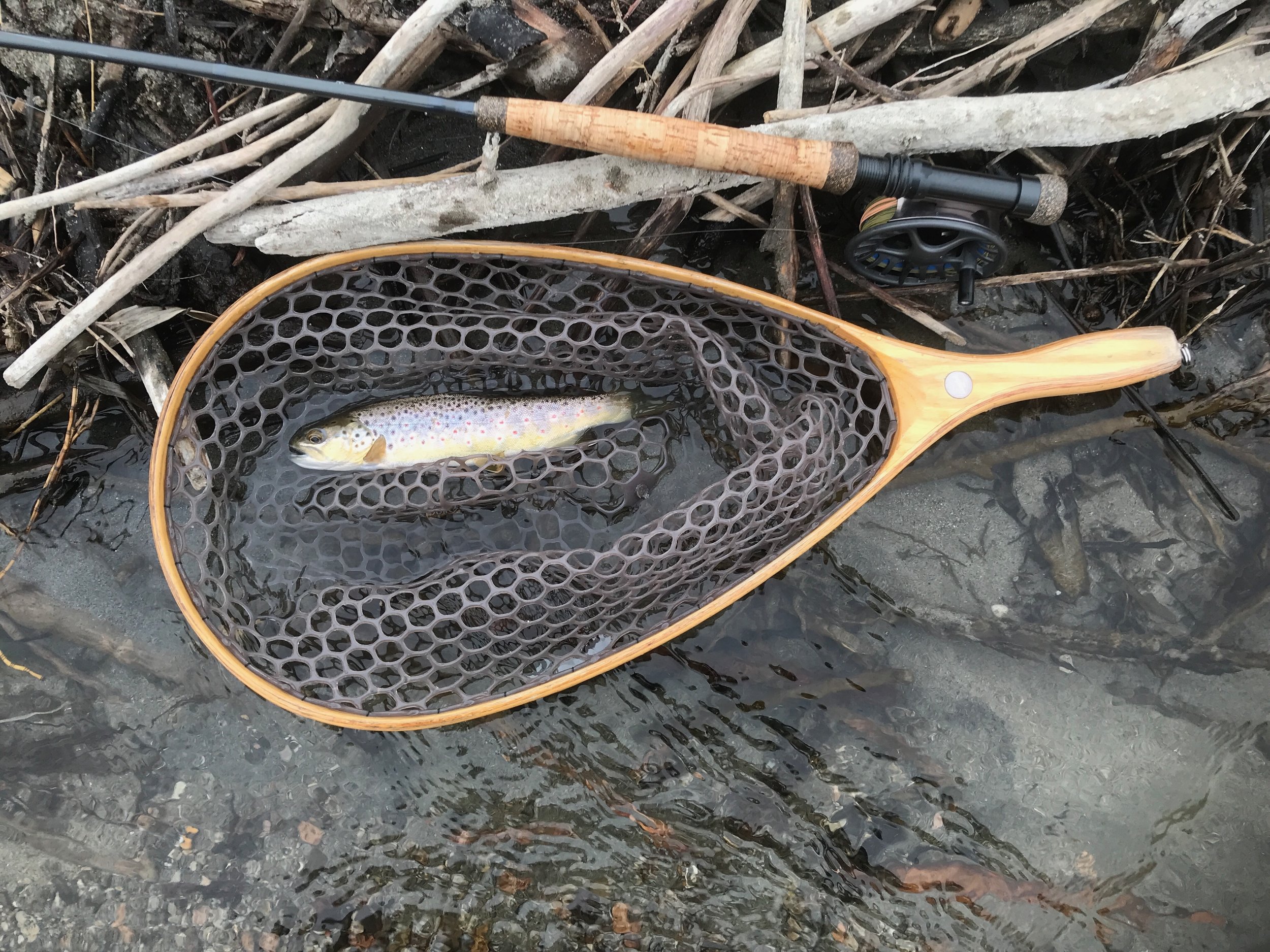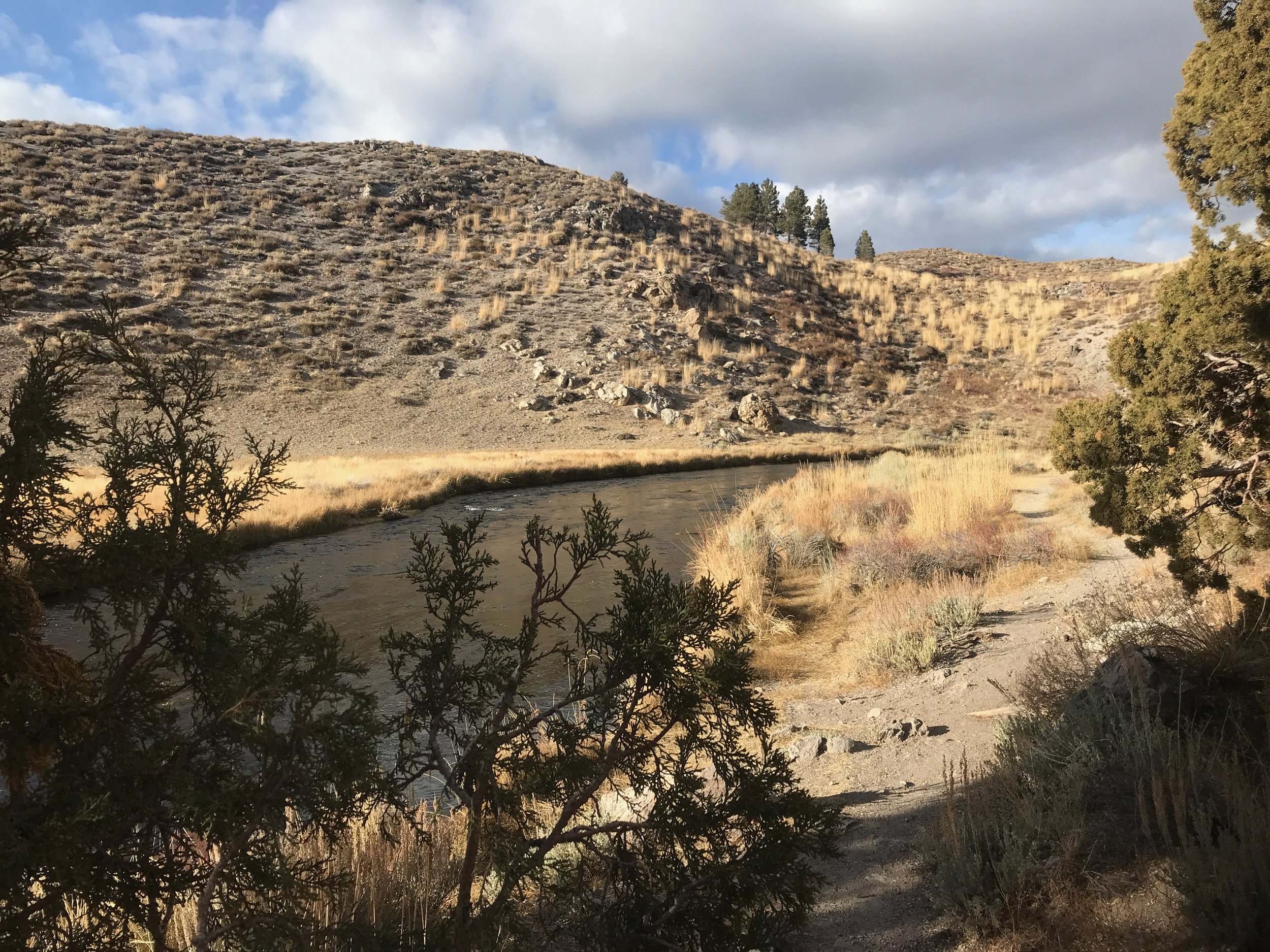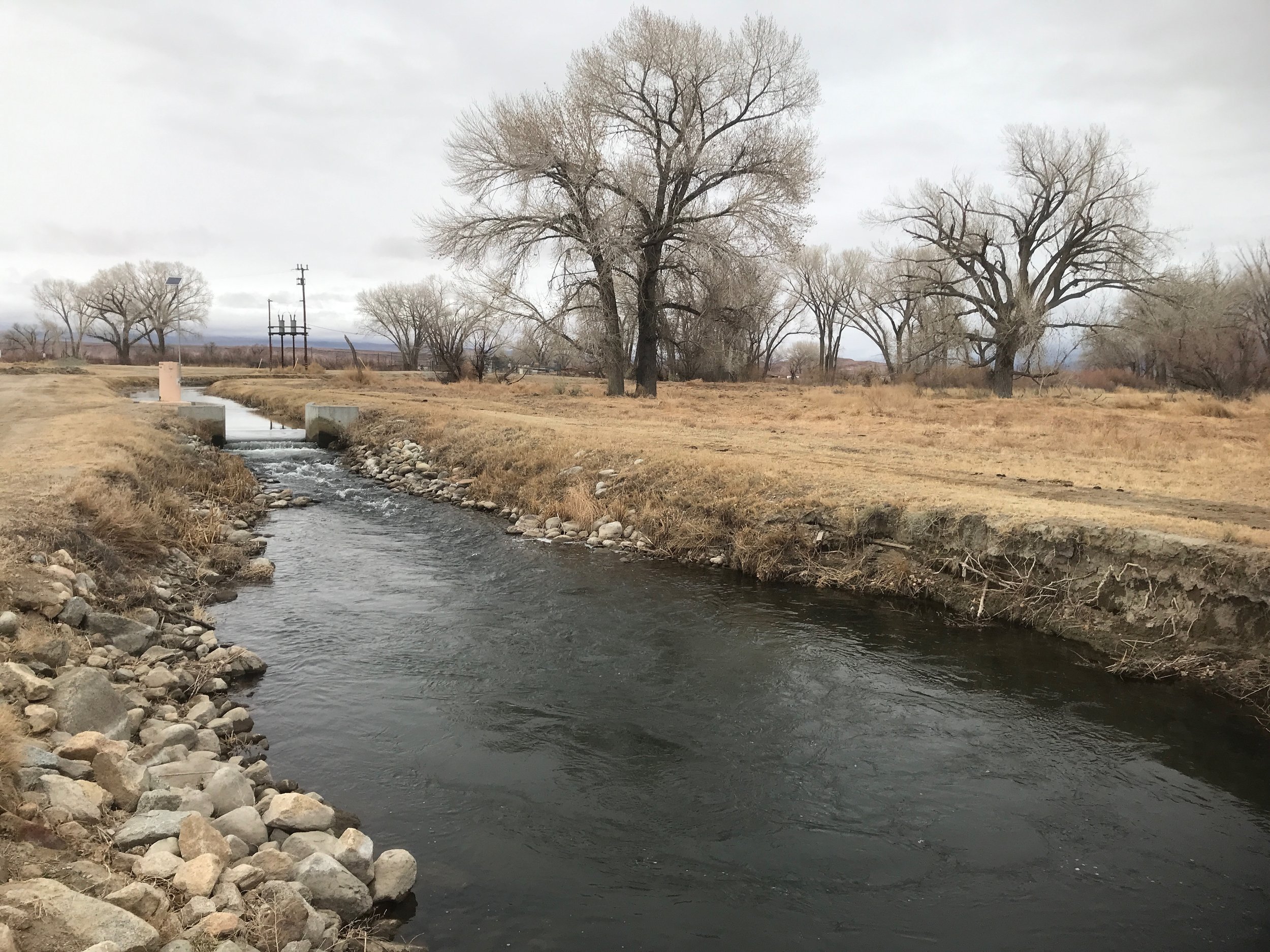Storms are moving through the Eastern Sierra, but just are not leaving enough moisture. Fly fishers are not going to find snow until they get to the 8,000 foot levels. Fly fishing in the Eastern Sierra right now is about as good as it gets for winter fly fishing. Nymphing is the prime method of fly fishing right now. Dry fly fishing is not consistent right now, but on the right day dry flies are producing. Mayflies, stoneflies, midges and black fly larvae are what the trout are feeding on.
Storms are rolling through the Eastern Sierra without leaving much in the way of precipitation.
Lower Owens River
Wild Trout Section:
December and January are the two slowest months of the year as the water is cold and insects are not very active. February and March is peak winter time fly fishing on the lower Owens River. Trout are feeding on caddis nymphs, stone fly nymphs and mayfly nymphs. Nymphing under an indicator or with a Euro rig is producing wild rainbow trout and brown trout. Olive quilldigons, Frenchie’s, hot spot pheasant tail nymphs, bead head flash back pheasant tail nymphs cream caddis nymphs, olive burlap caddis, stoner nymphs, tiger midges and zebra midges are fooling the trout when bounced on the substrate where the trout are feeding. Blue wing olive parachutes and Griffith’s gnats are the dry flies the trout are coming to the surface to take if they come to the surface.
Wild brown trout are taking nymphs fished on a Euro rig or under an indicator in the wild trout section of the lower Owens River.
Hot Creek
Interpretive Site:
Hard to believe it’s the end of January and fly fishers are still driving right up to the Kiosk and walking down to the creek. While there are some trout rising to the surface to take dry flies, nymphing is the consistent producer right now. For dry flies use size 20 blue wing olive parachutes, olive compara duns and Griffiths gnats. Nymphing with size 18 to 22 tiger midges, zebra midges, brassies, bead head flash back pheasant tail nymphs, Frenchie’s, olive quilldigons and hot spot pheasant tail nymphs are fooling wild brown trout and rainbow trout to 14 inches.
It's surprising it is the end of January and there is no snow on the ground hampering access to the creek..
Hot Creek
Canyon Section:
Fly fishers are driving right up to the parking lots and walking down into the canyon. Be careful of ice on the trail as snow from these latest storms is turning into ice in the shadows on the trail. Fishing in the flats and deep pools with lots of casts is what is producing trout. Tiger midges, blood midges, zebra midges, brassies, soft hackle brassies, bead head flash back pheasant tail nymphs, olive quilldigons, olive WD40’s, Frenchie’s and hot spot pheasant tail nymphs are fooling the wary brown and rainbow trout in the canyon.
Zach William from Glendale finally caught a trophy rainbow trout from the upper Owens River while fishing with Sierra Bright Dot.
Upper Owens River
Above Benton Crossing Bridge:
Vehicles are accessing all of the entry points from Benton Crossing Bridge to Howard Arcularius property. Trophy trout are in the river and offering excellent fly fishing for trophy rainbow trout from 18 to 22 inches. The trophy trout are in the deep holes, deep runs and cutbanks. Casting big nymphs like size 12 stoner nymphs, green/gold wire Prince nymphs and gold ribbed hare’s ear variations to the riffles directly above the deep pools and runs and letting the flies tumble into the deep pools bouncing along the substrate is how you get hooked up. Fly fishers working each hole thoroughly before moving on to the next hole or run is how to be a successfully trophy trout fly fisher on theupper Owens River. This winter there has been a number of juvenile trout feeding on mayflies and midges. Adams parachutes, Blue wing olive parachutes, olive quilldigons, bead head flash back pheasant tail nymphs and olive quilldigons are fooling these juvenile trout.
Flows in Bishop Creek Canal are at their winter low levels which is a huge contrast to last summer’s high flows.
Bishop Creek Canal
Behind the Old Ford Dealer:
Mid-winter doldrums are effecting fly fishing on Bishop Creek Canal. Low cold water has slowed down the bite on the canal. It’s hard to get a drift without spooking the trout right now. If you find the right fast water section you can catch trout using tiger midges, zebra midges, blood midges, bead head flash back pheasant tail nymphs and olive quilldigons.





